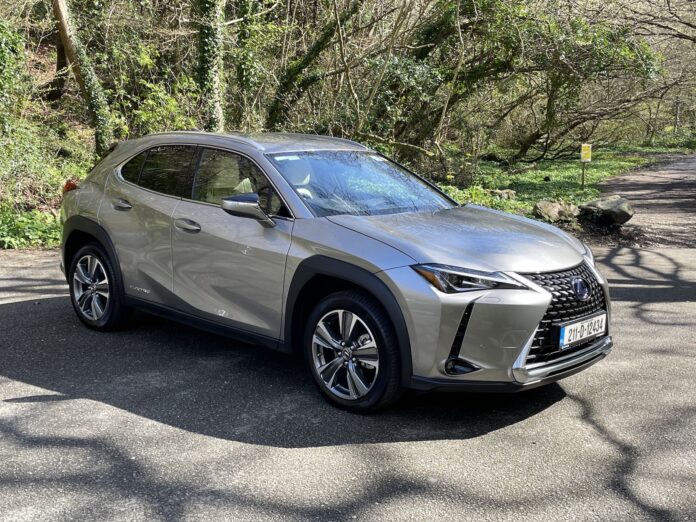14/04/2021 The first electric Lexus is a small step for EVs but a giant leap for Lexus-kind. Apologies for that paraphrased intro but the UX300e is a massively important car for the Lexus brand and Toyota. The 300e’s ‘GA-C’ BEV platform (battery electric vehicle) will be at the core of a host of future electric Lexus and Toyota models – so all eyes are on it. We’ve put the premium brand’s new compact SUV through its paces to find out if the smart looking five-seater can make the grade.
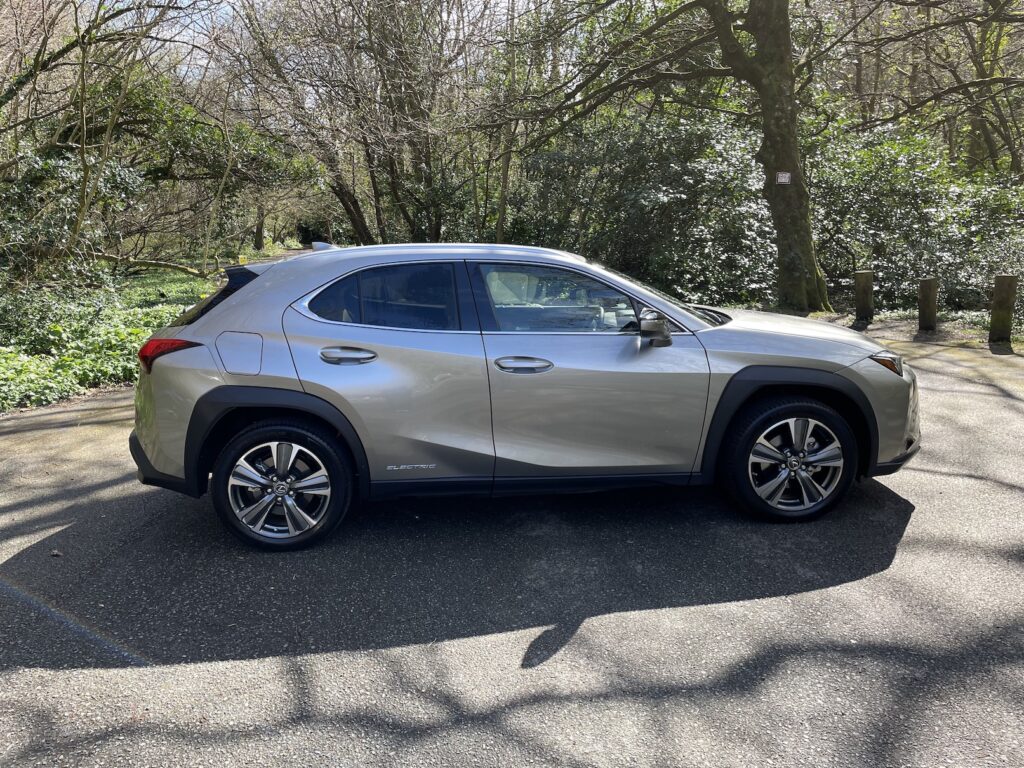
Externally the UX300e is a Lexus UX, so it is basically a premium version of the Toyota C-HR. Instantly the 300e’s active grille, Electric’ badging on its lower flanks, unique 18 inch alloy wheels and its two fuel flaps on either side of the car mark it out as different from a stock UX hybrid. The UX 300e is more aerodynamic than the hybrid UX at 0.31 using a smooth underfloor and other subtle design tweaks.
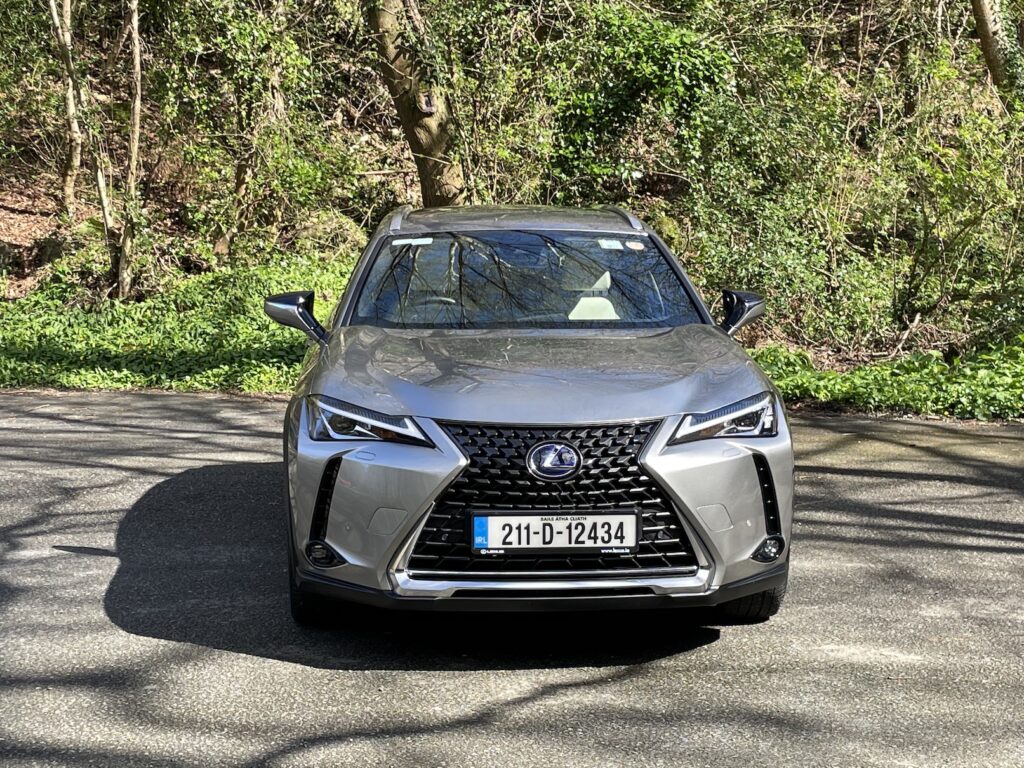
The filler flaps cover its two electric charging sockets. The driver’s side features a standard Type2 (AC) socket while the passenger’s side reveals a CHAdeMO (DC) fast charge socket. The lack of a CCS or Combo socket (AC & DC) that are more and more popular in Europe shows the car’s place in the world is still influenced by Japan, Asia and US markets where CHAdeMO is still a popular choice. Think of CHAdeMO as Betamax to Europe’s CCS ‘VHS’ – that’s a video tape reference to anyone under 40! Still, Ireland has no shortage of CHAdeMO public charge points for now, but I’m not sure Lexus has backed the right horse to be future proof in this part of the world.

The 300e’s ‘Luxury’ grade cabin is well equipped heated and ventilated front seats and heated rear seats a notable addition but the dash area and driver’s display still lack a wow factor. Rear headroom is slightly less (-16.4mm) and the boot is larger than the standard hybrid UX at 367 litres. A full suite of safety aids feature including road sign recognition, lane keeping assist, adaptive cruise control with stop and go, pedestrian and cyclist (day) detection, auto braking and auto high beam the most notable.
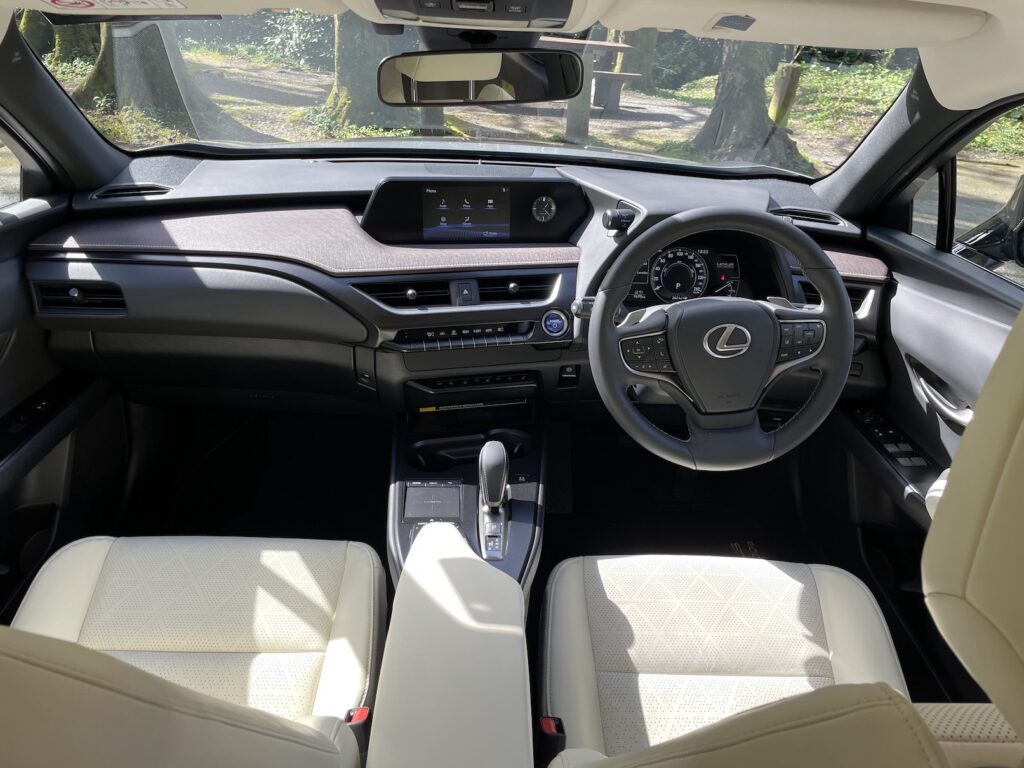
The UX300e has a single electric motor to drive its front wheels. It has a power output of 204hp and delivers 300nm of torque. 0-100km/h takes 7.5 seconds and top speed is 160km/h (100mph).
The underfloor air-cooled battery pack has a 54kWh capacity from its 288 lithium-ion cells. Air cooling and not liquid cooling for the battery caught our attention – Toyota says: “Benefitting from over 15 years of experience with hybrid batteries, refrigerated air ensures that stable battery output can be attained even under extreme battery load conditions, such as at high speed and during repeated rapid charging. With no danger of the leaks sometimes associated with liquid cooling, the system works by circulating cooled air inside the sealed battery pack. The system has been optimised to enhance the UX 300e’s performance, battery life and charging performance as well as the interior comfort”. Toyota quotes recharging times as quick as ‘0% to 80% in 50 minutes at 50kW or more’. A full charge from a three pin domestic plug takes up to 14 hours. Charging at a type2 domestic EV charger takes cup to 8 hours. The 300e has a maximum range of 305km.
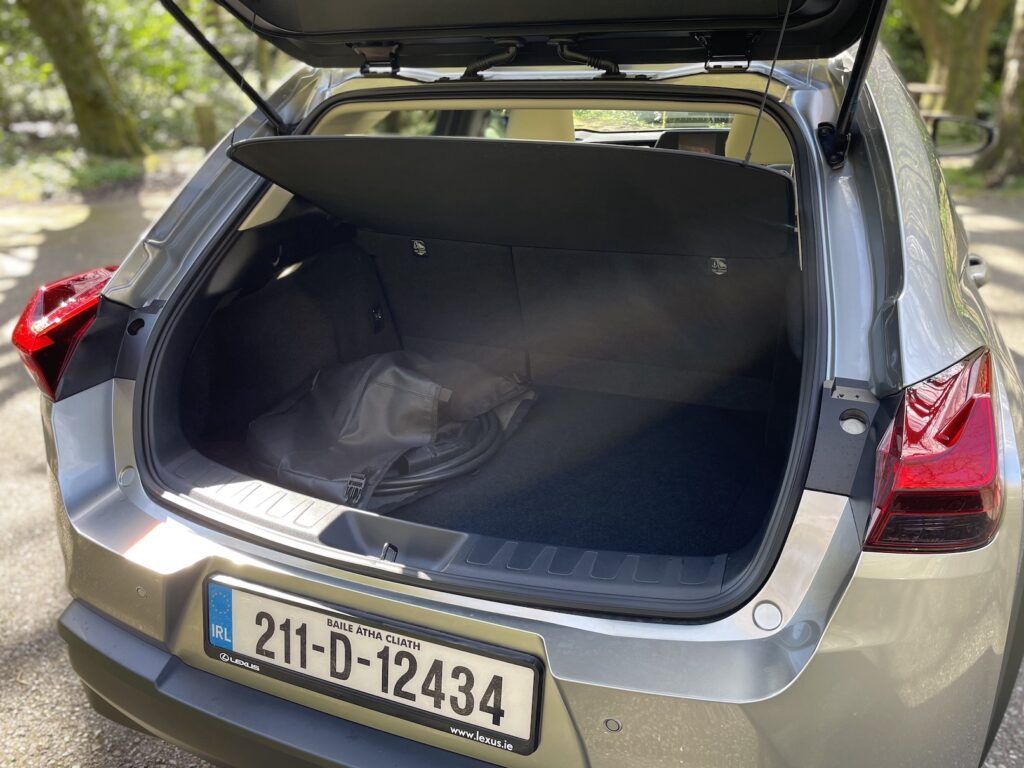
The driving experience is excellent and at times fun! This feeling is due to the car’s low centre of gravity and tuned suspension. The 300e feels substantial but it has rapid acceleration thanks to its torquey motor. You look forward to accelerating out of a bend and enjoying its pulling power. While many new EVs are rear wheel drive the UX300e manages to make front wheel drive almost as entertaining to drive. Like all Lexus vehicles the UX300e is near effortless to use to the point of being uninvolving. You get in, press the start button (for an instant remember nothing happens), select ‘D’ on the drive by wire gearbox and off you go. On the road the 300e’s single gear delivers a far more agreeable sound when accelerating compared to the hybrid UX’s CVT auto gearbox.
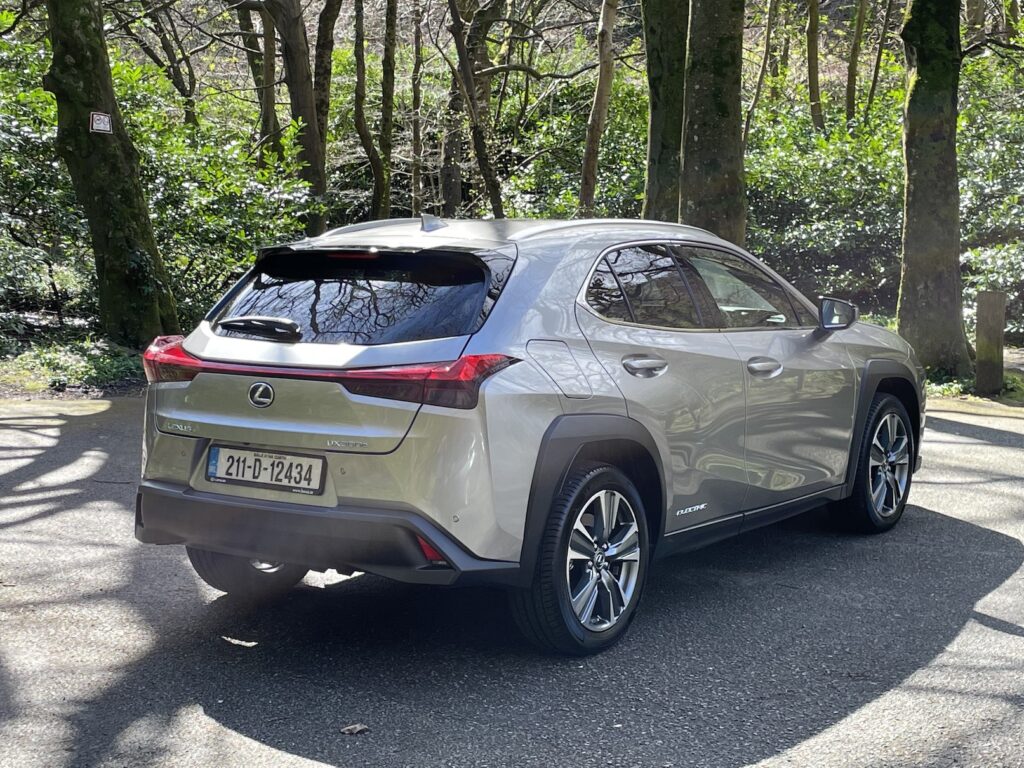
The UX300e is a quiet car, a switchable active sound control generator delivers a noise to alert those outside the car to its presence. Connectivity is good and of course there is a customer ‘app’ that is accessed through Lexus Link for charging status, location finding etc. The new ‘Lexus Charging Network’ offers incentivised access to charging networks across Europe. One niggle is the lack of detailed EV info available on the dash or driver’s display. As an EV nerd this clearly annoyed me. However the upside to not drawing a lot of attention to the car’s electrical underpinnings meant I simply had to just drive the UX300e like a regular UX – and you know what, in this way EVs will become the new normal.
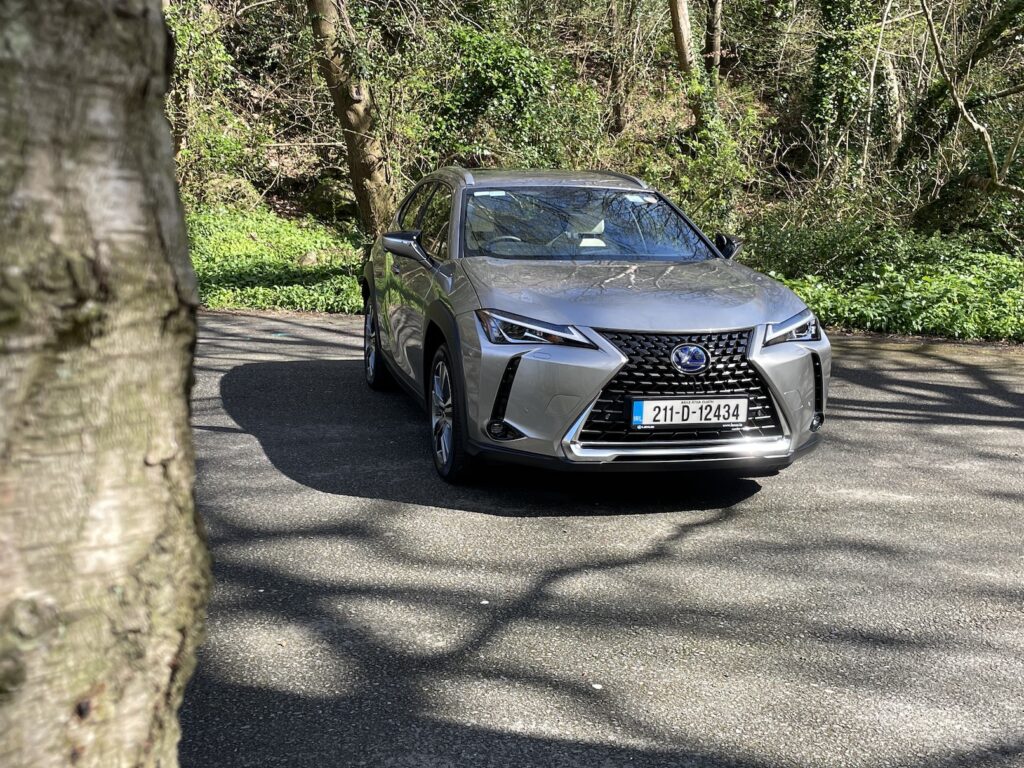
The Lexus UX300e is by far the best UX you can buy but is also a compelling EV in its own right. The platform it is built on proves we can expect great things from Lexus and Toyota in the electric powered future. Lexus UX300e pricing starts at €56,550 (inc. SEAI Grant). Michael Sheridan


